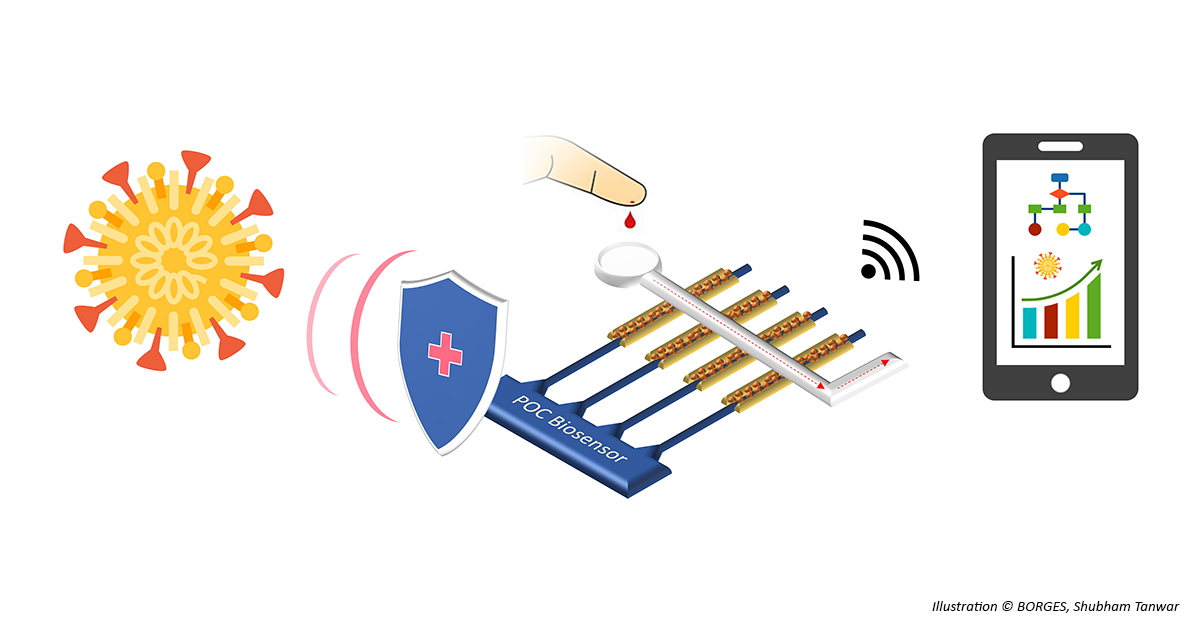
When we think about organic electronics, a lot of equations and complicated physics comes to our mind. However, if we look around, we can find it in different forms in our daily life. For example, organic electronics is present in OLED TVs, flexible cell phones, plastic solar cells, and among its other applications. One of the most promising implementations of organic electronics are biosensors; devices that connect living systems with digital electronics.
But, how can a biosensor achieve this? Let’s start by explaining what an organic transistor is and its role in biosensing. Organic transistors are devices that have an organic material as the semiconductor in their structure. It not only simplifies the fabrication process but also allows the devices to be portable and wearable. These transistors are coupled to a layer of biorecognition elements, which can be antibodies, enzymes, nucleotide chains, etc. and can specifically recognize and bind to the molecules of interest, a phenomenon known as biosensing. Organic transistors transduce and amplify the biochemical signal produced from the binding process to an electrical signal, giving a straightforward and real-time readout; this is where the importance of integrated biosensor devices comes into the picture.
Moving to clinics, what can biosensors offer? Nowadays, the gold standard techniques for diagnosis used in clinics are based on biosensing, and among these techniques, the most commonly used are immunoassays and polymerase chain reaction (PCR). Besides their high specificity and sensitivity, it is essential to point out that these techniques are expensive, time-consuming, and require specific equipment and trained personnel. It thus gives rise to the need for an alternative approach that can overcome these issues.
In the last few years, biosensing based on organic transistors has emerged as a new approach to improve the limitations of conventional methods. The main advantage of these devices is their versatility, as they have many different applications, including diagnosis and disease monitorization, as well as the obtention of output in real-time. Their small size and easy readout make them portable and easy to operate by any user. Equally important, the simple and low-cost fabrication allows large-scale manufacturing. Moreover, it is worthy of mentioning the high sensitivity and selectivity of these biosensors, as detection can be achieved even at a picomolar scale. All these together make organic transistor-based biosensors a perfect candidate to be used at the point-of-care (POC).
In an outbreak of highly infectious disease, as in the ongoing pandemic of COVID-19, an easily accessible and rapid diagnostic method is crucial to prevent and control the spread. Since it can cause a high worldwide death toll and an economic depression, countries are trying to find efficient ways to prepare themselves against such sudden and destructive situations. The current diagnostic tool for COVID-19 is a PCR-based technique, which, besides the disadvantages mentioned before, also implies that not everyone can be tested and the decision to test has to be linked to an assessment of the likelihood of infection. New point-of-care diagnostic tools such as small and cheap biosensor devices that could be distributed and provide results within minutes would have a significant impact on limiting the spread of such a disease.
In a nutshell, biosensors based on organic transistors have a tremendous potential to be used as a POC device owing to their simple architecture and are instrumental in controlling the pandemic. The research community worldwide has been devising ways to take them from the labs to the market, and we are happy that BORGES is playing its part in improving our society’s well-being. Want to know how? Click here!
